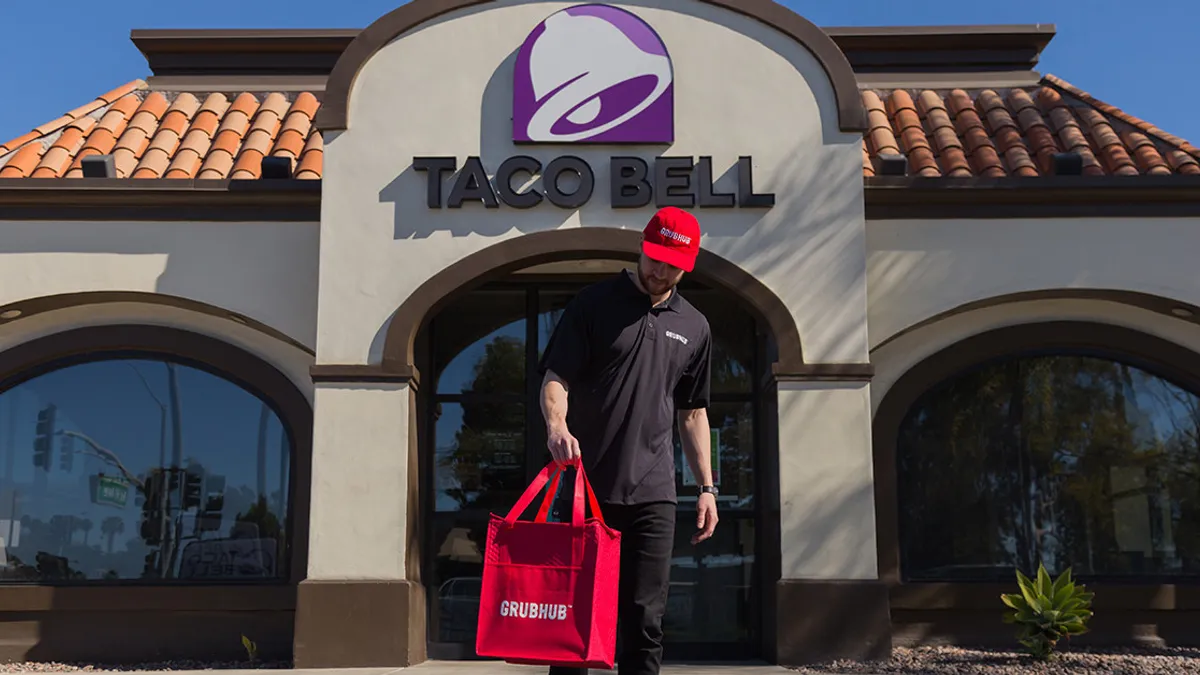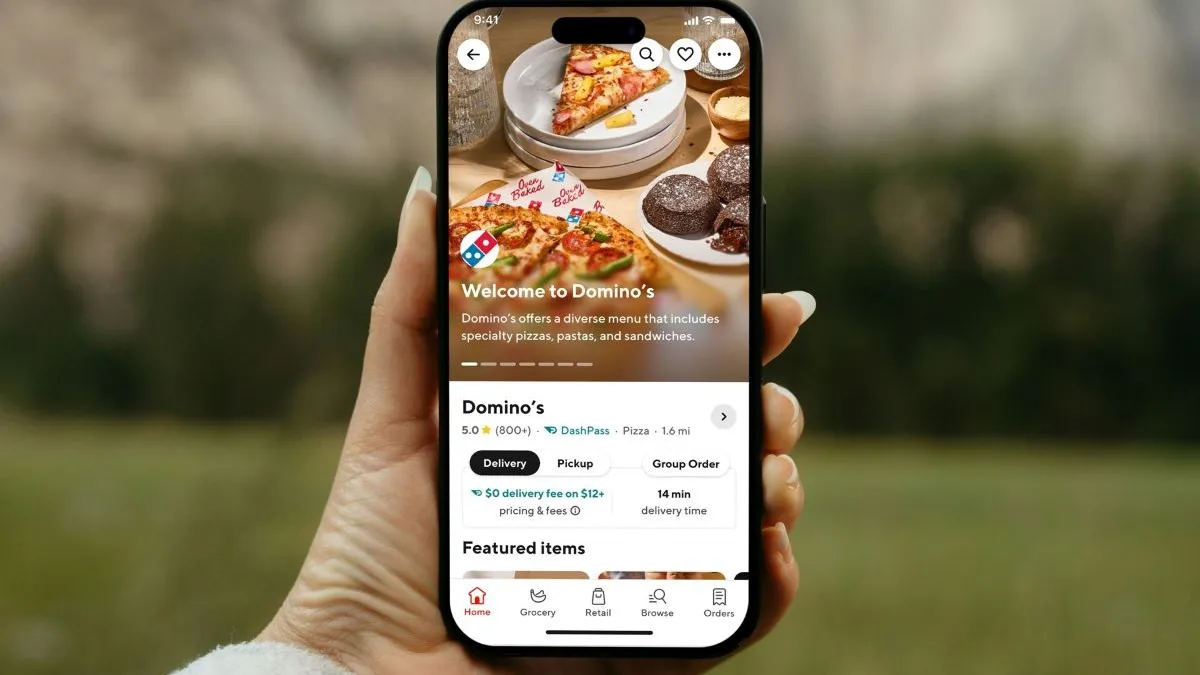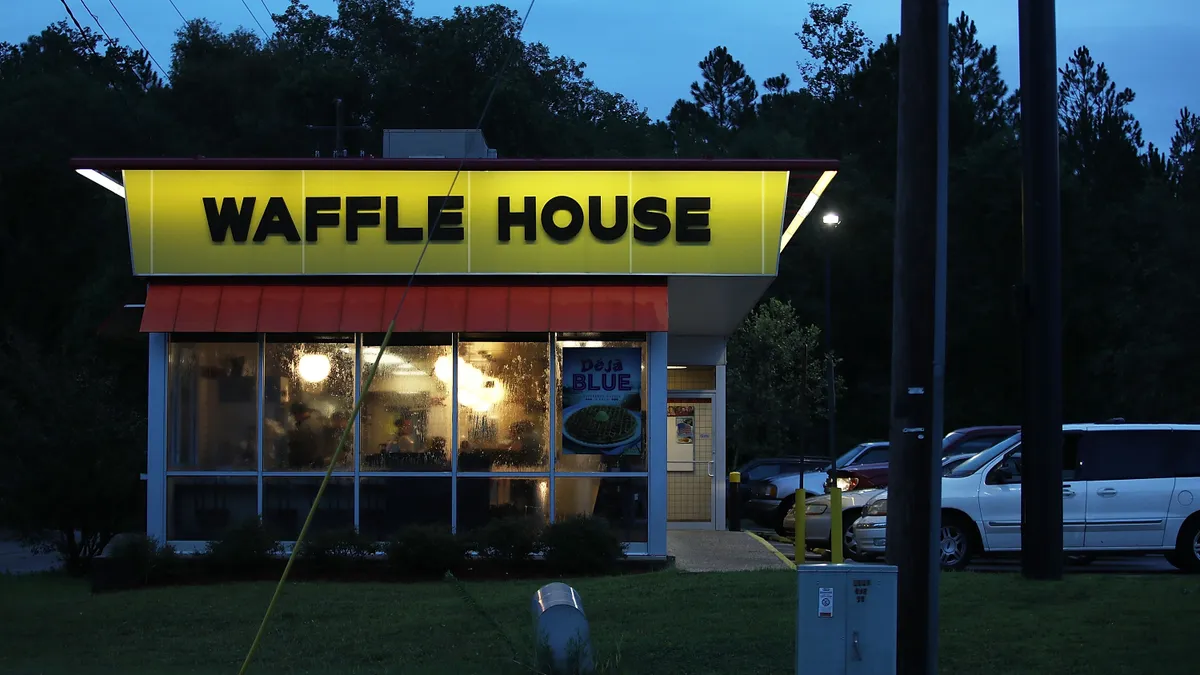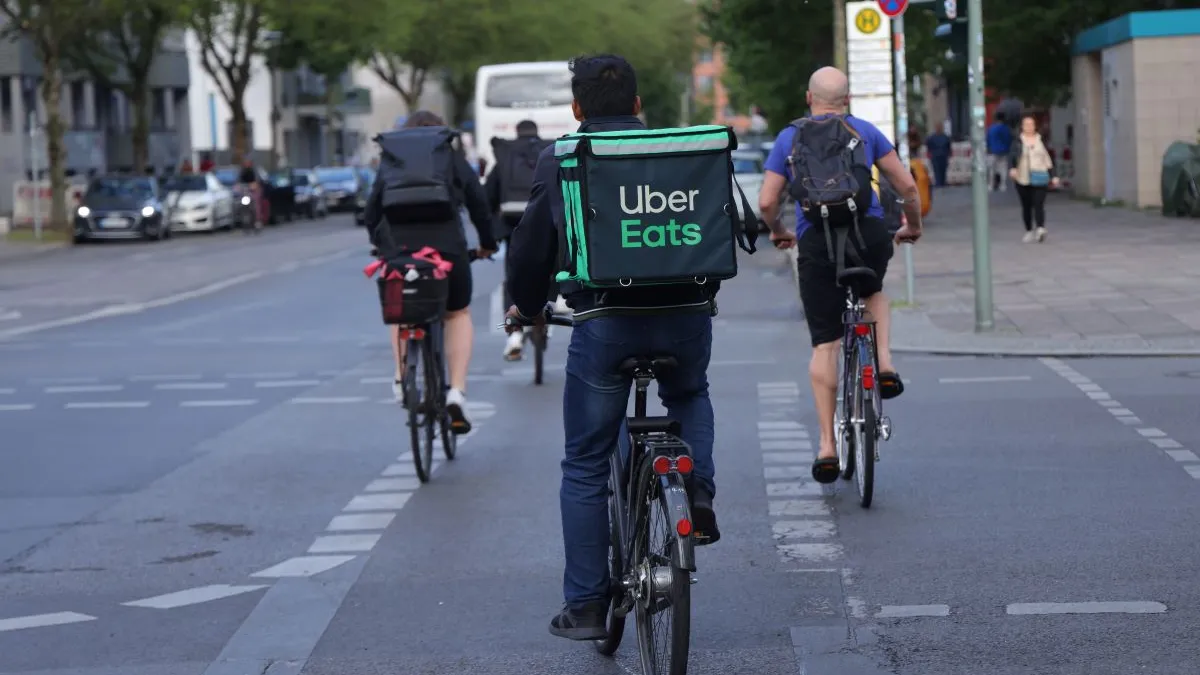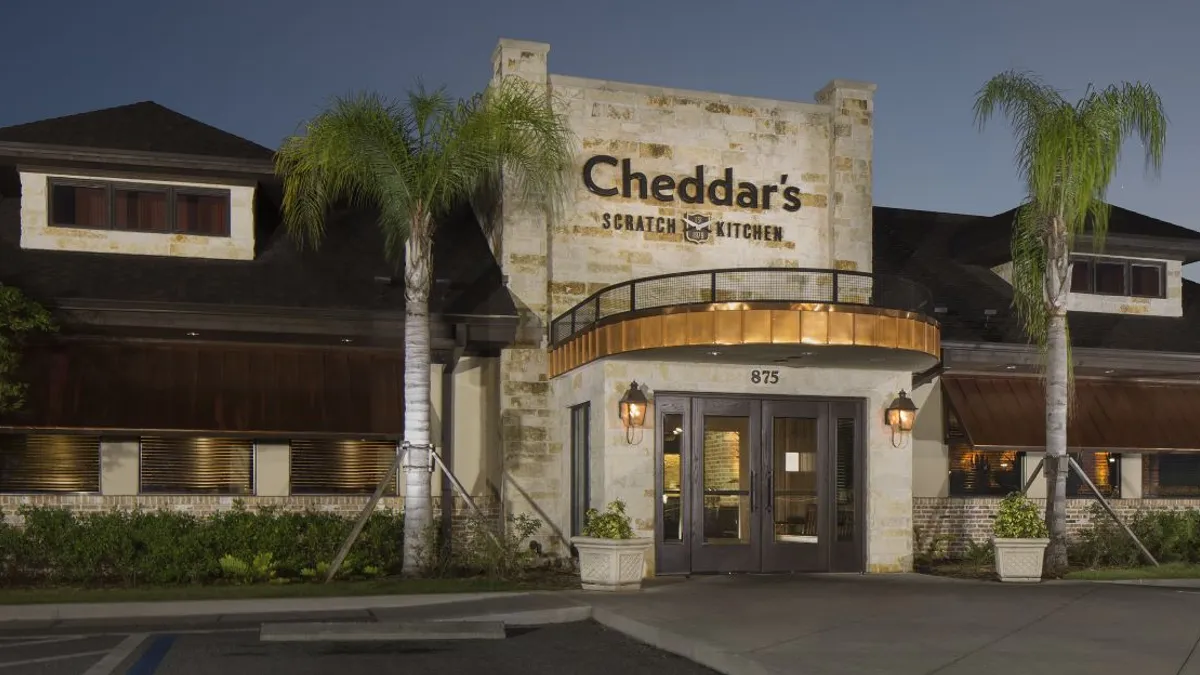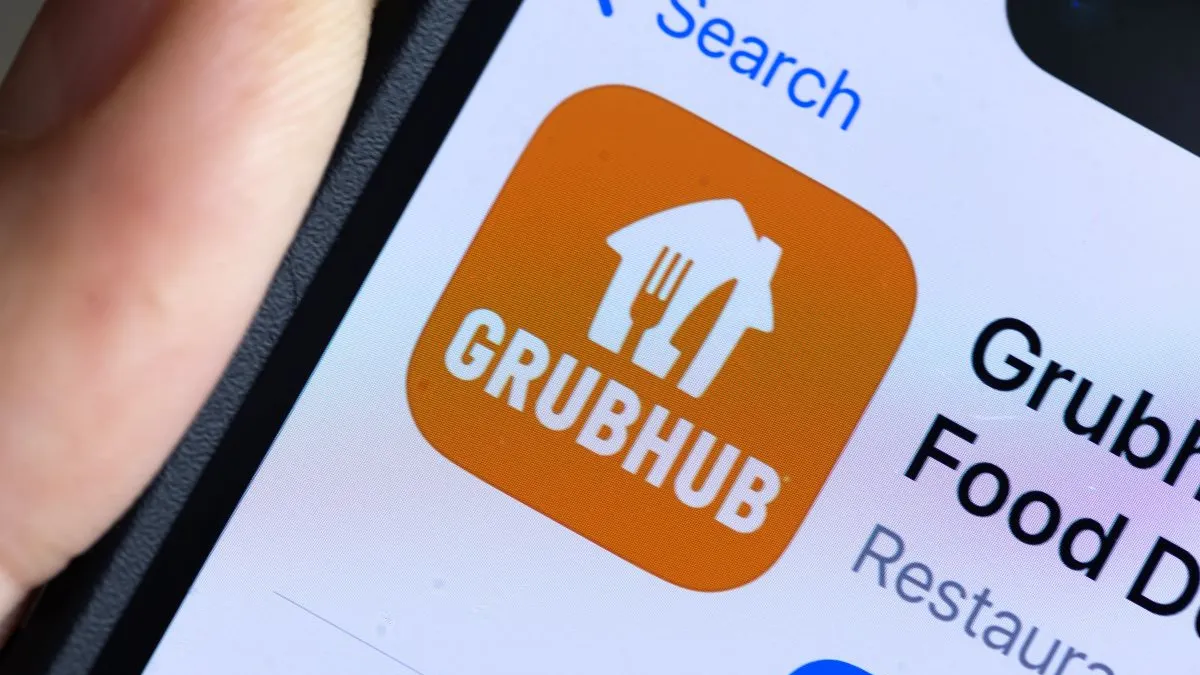Once the king of third-party delivery, Grubhub’s throne is crumbling under market pressure from heavyweight rivals. Competitors have scaled quickly, entering new territories and adding a steady flow of non-partnered restaurants, which have lured diners away from the platform, executives said in a letter to investors.
DoorDash has since taken the most market share followed by Uber Eats. Grubhub is in third place less than a quarter of delivery transaction market share.
Looking to reclaim market dominance, the beleaguered delivery company plans to begin listing non-partnered restaurants on its website, Grubhub CEO Matt Maloney told investors during an earnings call. The platform has experimented with the strategy in the past to grow its reach, but it resulted in slower delivery times and poor quality of service, Maloney said.
The practice has also landed brands like DoorDash and Postmates in hot water and put restaurants in a bad position with customers that issue complaints over incorrect menu items and food quality that the operators can’t address. But with delivery competition at an all-time high, it may be a necessary risk to reach and market to more restaurants.
"I think they were pretty clear in a lot of ways that DoorDash and others forced their hands," Michael Schaefer, Euromoniter global lead for food and beverage, told Restaurant Dive.
The company plans to leverage its loyalty platform to boost customer retention and upload more non-partner restaurants to its platform over the next 12 to 18 months to make its platform more attractive to diners, Grubhub said in the letter.
"I think they were pretty clear in a lot of ways that DoorDash and others forced their hands."

Michael Schaefer
Global Lead - Food and Beverage, Euromoniter
"The commoditization of the delivery and the restaurant supply … has happened more or it’s happening faster than I think we thought it would happen," Maloney said. "But with that as a backdrop. The winner in this space clearly has to have a differentiated experience for diners."
Competitors are now battling for the same diners who are no longer loyal to one platform, Grubhub said.
"What they found is that still the most important thing to a lot of consumers is 'how many restaurants on platform and can I order form them?'" Schaefer said. "That became a big enough issue that clearly they felt they had to move and had to offer that in order to attract new customers, keep them on the service and expand into new areas in some cases."
What this strategy means for restaurants
For restaurants, Grubhub's new tactic could mean they will be offering delivery without even realizing it, an issue for many restaurants that have found their brands on DoorDash and Postmates without knowing it.
"We believe the single biggest determinant for diners choosing a marketplace is whether it has the restaurants that he or she wants, and this is an opportunity for the restaurants we list on our platform to drive more orders to their business, but we'll without hesitation remove any restaurant who reaches out to us and doesn't want to be listed on our marketplace," Katie Norris, Grubhub's senior manager of corporate communications, said in an email to Restaurant Dive.
Grubhub would take the brunt of the cost, sending a driver to pick up the order and then make the delivery without charging the restaurant, executives told investors.
"It's going to be tough,” Maloney said. "The reality is non-partnered restaurants are on the platform for the consumers that specifically want that non-partner."
Even though Grubhub seems reluctant to leverage the strategy, the volume of restaurants on a platform helps attract and retain customers, Schaefer said. On the one hand, this tactic can be beneficial to converting restaurants into partners and provide an opening to sell demand generation and POS integration, Schaefer said. On the other, it can also annoy restaurants that would rather not have anything to do with the service, he said.
"It's going to be tough. The reality is non-partnered restaurants are on the platform for the consumers that specifically want that non-partner."

Matt Maloney
CEO, Grubhub
But with most of its rivals embracing the practice, Grubhub doesn't want to miss out on this growth opportunity. It's unclear if this strategy will be a long-term trend, especially if it proves to fail in the long-run like Grubhub's previous attempts in this area. Non-partnered restaurants won’t be a significant percentage of the orders, either Norris said.
"Partnering with restaurants is the right ploy in this industry," Maloney said.
The company plans to bring on more sales staff to help get restaurants across the country signed up on the marketplace, Norris said.
Grubhub could improve by bolstering its QSR roster, Maloney said. Even if these chains aren't official partners, adding more to QSRs to the marketplace can help drive diners to the site. Once diners see the marketplace, they start browsing and then start ordering from independent restaurants, which make up 80% of its restaurants, Maloney said.
The platform has already found success through its partnership with Yum Brands and by adding KFC and Taco Bell to its offerings. Diners are drawn to the site because of the known brands and then order from more small and medium businesses, Maloney said.
Still, Grubhub doesn't make as much money from enterprise QSRs as it does from small and medium-sized restaurants because larger chains don’t need demand generation — they only want help with delivery, executives said.
Doubling down on loyalty
Grubhub's loyalty program, which it officially launched during the summer, and its in-house POS integration are also proving to be differentiators in the segment, the company said. These assets also give restaurants more tools to gain a competitive edge in delivery.
"Over 20% of our diners are redeeming loyalty rewards right now," Maloney said. "Restaurants have given away over $70 million so far this year on our platform … restaurants have seen that free food increases their competitiveness on our platform, which is rewarded by accelerated growth."
The company plans to increase its spending on its loyalty programs and show restaurants the immediate ROI to better generate long-term investment from restaurant groups on its platform, he said. Grubhub will also share customer data with its closest partners to help them build up assets over time, Maloney said.
"In order to emulate our loyalty advantage, the competition will have to give away a tremendous amount of money, which is a very challenging problem when they're each losing over $1 billion a year," Maloney said.
While Grubhub's close relationships with independents positions itself to offer better loyalty, it will be hard to predict whether or not this will be helpful with so many others inching into the same space, Schaefer said. DoorDash and others are also looking at offering subscription services that provide free or reduced delivery, he said.
Grubhub also plans to test a subscription program, the company said.
"The issue is it is hard to see any one initiative that Grubhub could take that is going to be radically different from what other players in the space are doing, some of which are better funded in the space for now," Schaefer said.
Many analysts aren't confident that Grubhub's strategy will be enough, and many downgraded the company’s ratings in the days following its Tuesday earnings.
"We believe Grubhub's ... success is now contingent on keeping users loyal to its platform, which we believe is inconsistent with the strategy to support enterprises brands (quick service restaurants) whose consumer profile is highly promiscuous," BTIG said in a recent report emailed to Restaurant Dive.
BTIG analysts believes that Grubhub went wrong by focusing on adding enterprise brands that don't pay it for demand generation, which is where the aggregator profits the most. Its biggest deal within the last year was with Yum Brands, which invested $200 million in the company and became an exclusive partner with Grubhub. The aggregator also partnered with Wendy's, Dine Brands, McDonald's, Panera Bread and Shake Shack during the last quarter, according to the shareholder letter.
"This leads us to believe that Grubhub is chasing deals with large chains that are not leading to profit," BTIG said.
Where does delivery go from here?
Despite investor pressure and Grubhub’s outlook of decelerating growth and commoditization, e-commerce demand will continue to drive a need for the service, something restaurants should already be thinking about, Schaefer said.
"I don't think there is any question that delivery is here to stay," Schaefer said.
What might impact Grubhub's forecast is purpose-built ghost kitchens and virtual restaurants that are designed specifically for delivery and can help bring the price down, Schaefer said. But Grubhub did not mention this shift, he said.
With delivery, now is a good time for smaller restaurants to be thinking about different options available for organizing the business, he said. That could mean a combination of eat-in and ghost kitchen facilities and working with third-party delivery partners or doing their own delivery, or a mix like how Panera uses its own delivery fleet, but recently partnered with third-party aggregators, he said. With 20% to 30% of operations going to delivery, for example, operators will need to rethink their outlets from day one, he said.
"That awareness of how things are going to be reshuffled is probably the most important thing," Schaefer said.
"I don't think there is any question that delivery is here to stay."

Michael Schaefer
Global Lead – Food and Beverage, Euromonitor
That could also mean a lot more infrastructure that could support delivery, such as commissary kitchens or ghost kitchens or even delivery drop-off points, he said.
But as delivery itself changes and leads to a new age of restaurants, it isn’t likely to go away anytime soon, and will continue to evolve, if not consolidate.
"It's a bit of a land grab right now to have the most restaurants and the most service," Schaefer said. "It's almost become the price of admission to keep from becoming a commodity."
One of theses that Grubhub shared in its call is that delivery will continue to grow, but in the low double-digits, which Schaefer said makes sense. There just won’t be the same massive expansion available that there has been in the past, he said. Another area that will have to shift to drive growth is the level of promotions and subsidies, he said.
"The most bruising part of the delivery competition is subsidizing meals, giving discounts in order to get more people on the service," he said. "Eventually that becomes harder and harder to sustain."



